Garuda Purana’s Teachings on Virtue, Sin, and the Cycle of Reincarnation

The Garuda Purana, one of the eighteen Mahapuranas of Hinduism is a revered Hindu scripture that provides a profound understanding of the world, human life, and the path to spiritual liberation. Narrated by Lord Vishnu to the celestial bird Garuda, the Purana deals with a variety of topics including cosmology, mythology, Dharma, karma, and the afterlife. Its rich narrative and philosophical teachings have made it influential in Hindu thought and practice for centuries. For years devotees and academics have considered it equally important.
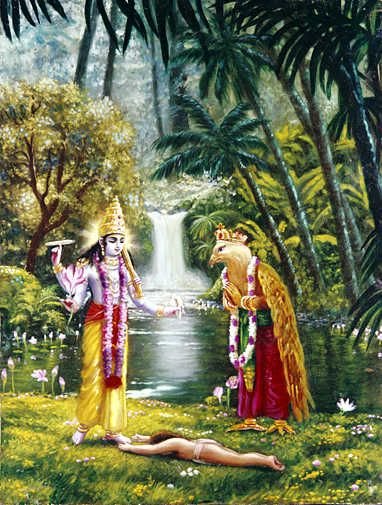
History
Composition
The Garuda Purana tells the unique story of Lord Vishnu imparting his wisdom directly to the celestial man Garuda who is also his vehicle. Scholars estimate that the earliest disciples can be dated between the 4th and 11th centuries CE, with additions and modifications continuing until the 2nd millennium CE.
Contents
The text is divided into two main sections: Purva Khanda (previous section) and Uttara Khanda (next section). Purva Khanda deals with various topics including cosmology, creation, nature of time, history of life and various ages or cosmic cycles. It also explores the eternal laws that govern the universe and provides guidance on moral, ethical, and spiritual practices.
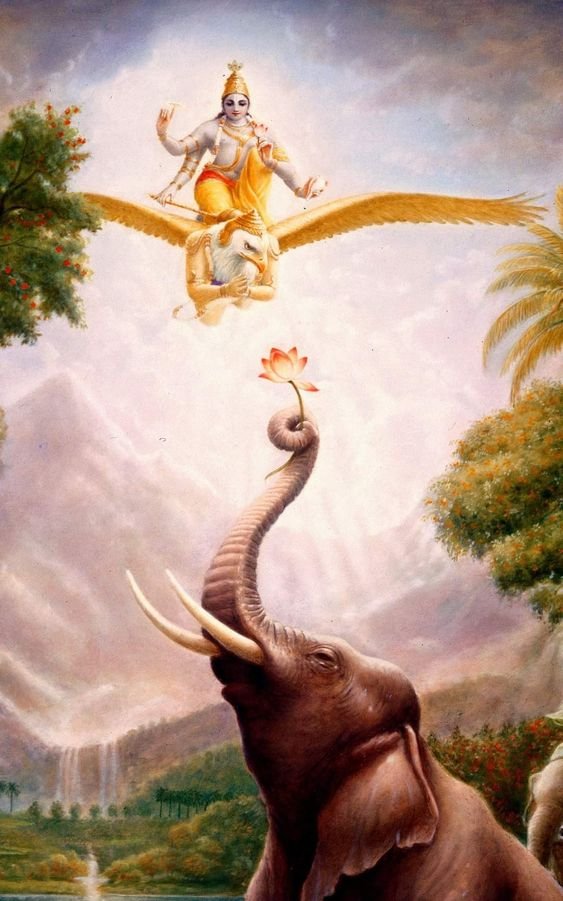
The Uttara Khanda focuses more on the afterlife, the nature of heaven and hell, and the consequences of good and bad deeds. It vividly describes the rewards of virtue and the punishments for sin, offering a powerful incentive for righteous living. The text also contains valuable information on astrology, palmistry, medicine, and the properties of precious stones.
Mythology: The Story of Garuda
Garuda was born to the sage Kashyapa and his wife Vinata. Vinata, unfortunately, was enslaved by her co-wife Kadru, mother of the Nagas. Kadru has falsely trapped her into becoming her servant by lying about a bet. To free his mother, Garuda undertook a challenging task of stealing the Amrita from the Devas and give them to the nagas as per their request. When Garuda successfully stole the Amrita and returned to the Nagas, demanding they free his mother, he did not consume the Amrita himself, demonstrating his unwavering devotion.

Impressed by his selfless act, Lord Vishnu appeared before Garuda and offered him a boon. Garuda asked for immortality and Vishnu agreed. Garuda too offered Vishnu a boon in return, and the Lord hence called for Garuda to become his vehicle. Garuda acquiesced, and subsequently took to the skies.
Other important mentions in the purana
The 14 Gemstones
The Garuda Purana also delves into the metaphysical properties of 14 gemstones. These gems are believed to possess unique energies that can influence various aspects of life, from health and wealth to love and spirituality.
Diamond, a symbol of purity and strength, is said to enhance clarity of thought and decision-making. Ruby, associated with passion and vitality, is believed to boost energy levels and courage. Pearl, representing peace and tranquillity, is thought to promote calmness and emotional balance. Coral, linked to courage and vitality, is believed to protect against negative energies. Emerald, connected to love and compassion, is said to foster harmonious relationships.

Yellow Sapphire, associated with intelligence and wisdom, is believed to enhance mental acuity and decision-making skills. Cat’s Eye, known for protection, is thought to ward off evil influences and accidents. Red Coral, linked to courage and vitality, is believed to boost energy levels and confidence. Hessonite Garnet, associated with prosperity and success, is said to attract wealth and abundance. Blue Sapphire, connected to spiritual growth and wisdom, is believed to enhance intuition and psychic abilities.
Opal, linked to hope and inspiration, is thought to promote creativity and optimism. Tourmaline, associated with protection and grounding, is believed to shield against negative energies and promote emotional balance. Chrysoberyl, known for protection and intuition, is thought to enhance psychic abilities and ward off evil influences. Aquamarine, linked to peace and tranquillity, is believed to promote calm and clear communication.
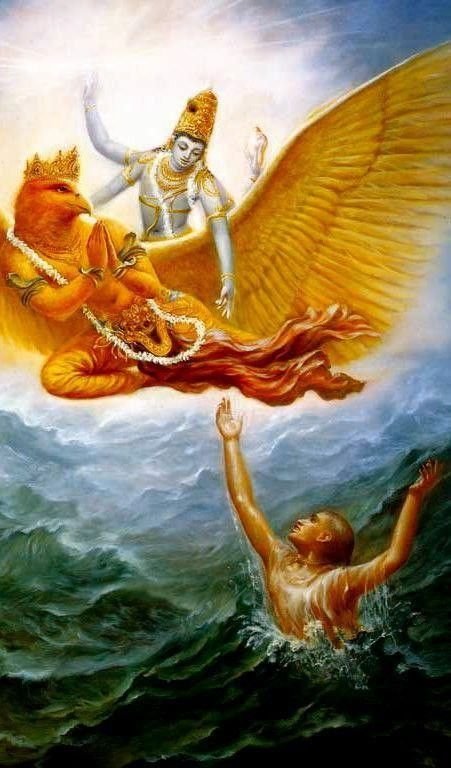
By understanding the properties of these gemstones and wearing them appropriately, individuals can harness their power to improve their lives and achieve their goals. However, it is important to consult with a qualified astrologer or gem expert to determine the most suitable gemstone for individual needs and to ensure that the gemstone is of high quality and ethically sourced.
Nitisara part of the Garuda purana
It aims at guiding kings and commoners in achieving success in life and securing a good position on earth and exalted stations in heaven after death. It emphasizes the importance of not mixing in vulgar companies, as company of the wicked or iniquitous is neither good in this life nor in the one to come. A man should avoid oral discourse with the wicked and avoid quarrels with trusted friends.
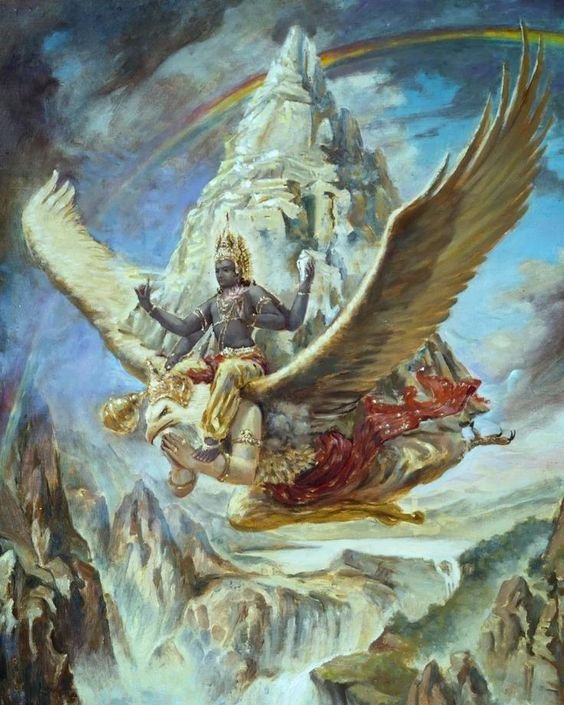
The text also discusses the role of time in the evolution of the universe and its eventual destruction. He said that time cannot be defeated, its authority cannot be ignored. Vrihaspati, the lord of celestials, explained the rules of conduct to Indra, who gained wisdom and was able to fight against demons and win back the kingdom of heaven. He who associates with good people, who talks with scholars on commendable subjects, who associates with people who have no evil desires, will witness peace. incest or jesting with another’s wife, taking of another’s goods, and residence in another’s house should be avoided.
A true wife speaks sweetly to her husband, is clever in managing household affairs, and is one in spirit with her lord. She is always engaged in doing acts of piety and virtue with the aim of bringing happiness and prosperity in the house. In conclusion, the text emphasizes the importance of adhering to the rules of ethics and avoiding vulgar companies and relationships.

Worship
The Garuda Purana provides detailed instructions on the worship of various deities, including Vishnu, Shiva, and Shakti. It outlines the specific rituals, mantras, and offerings required to please these divine beings and attain their blessings. It also dives very deeply into the means of worshiping these gods and various types of vratas or fasts that a devotee can keep in order to seek blessings from them. For vratas it also mentions that “a Vrata signifies an act of living in conformity with the rules of conduct and self-control, as laid down in the shastras. The Vrata is but another name for penance. A Vrati is under the obligation of observing specific rules of conduct and self-control. He should bathe, thrice every day, during the entire term of the Vrata, and sleep on the bare ground, contented, and controlled in his mind and senses.”
Scientific Aspects of the Purana
Diet
The text discusses the importance of dietary habits in maintaining health and preventing diseases. It explains that certain factors can aggravate the bodily balances, which are influenced by various factors such as ingestion, anxiety, sexual excesses, physical fatigue, fright, grief, loud talking, carrying heavy weights, undue application to work, and fasting. It also gives remedies and prescribes ways that one can utilise to take care of his physical well being

Medicine
It discusses various diseases, their symptoms, and herbal remedies. The text lists numerous medicinal plants and their properties, providing detailed instructions on their preparation and usage. It also emphasizes the importance of a balanced diet, regular exercise, and a healthy lifestyle for overall well-being. While some of the specific remedies may be outdated, the underlying principles of holistic health and natural healing remain relevant today. The Purana’s emphasis on preventive healthcare and the use of natural remedies aligns with the core philosophy of Ayurveda.
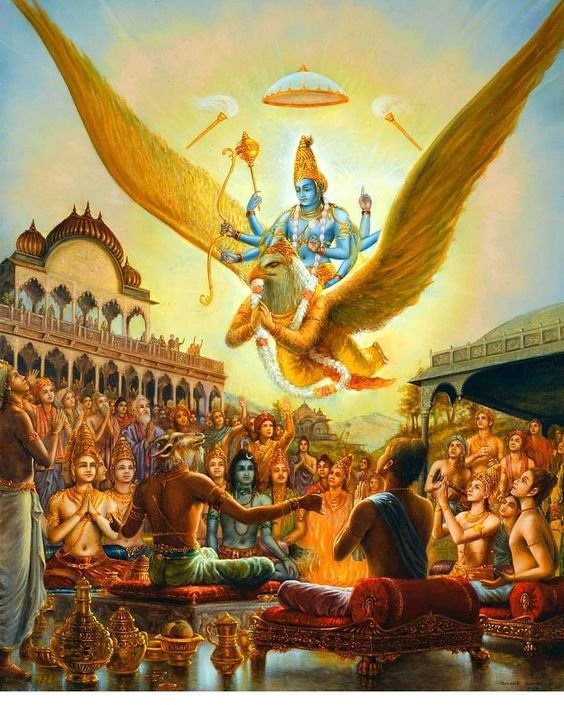
Legacy
The Garuda Purana has left an enduring legacy on Hindu culture and spirituality. Its teachings have influenced countless generations of devotees, inspiring them to live virtuous lives and seek divine grace. The Purana’s emphasis on dharma, karma, and the afterlife continues to be relevant in the modern world, offering guidance and solace to those seeking meaning and purpose in their lives.
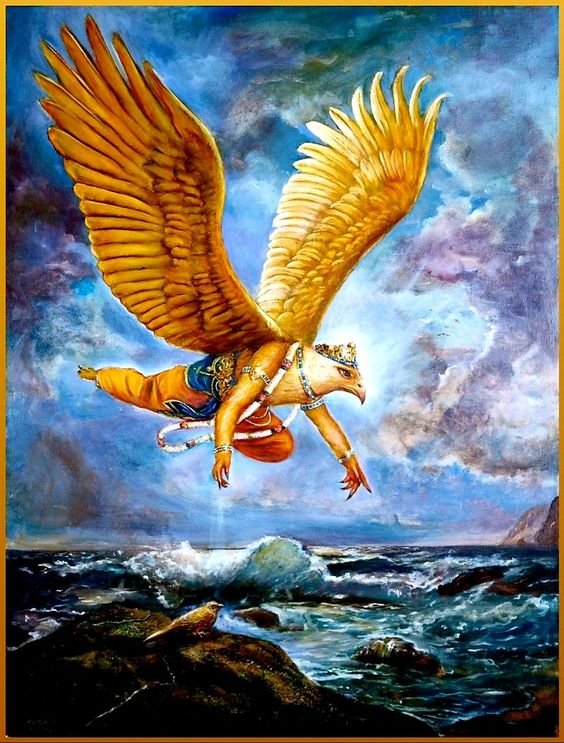
People often recite the Garuda Purana after death, especially four to eleven days after death. This ritual is believed to guide the souls of the dead to the afterlife and bring peace. Chanting it is said to create a sense of peace that allows the soul to easily separate from the body. It explores the concept of karma by explaining the consequences of a person’s actions in this life and the next. The ultimate goal is to help the soul achieve moksha, liberation from the cycle of life and death. The chanting is accompanied by special rituals and offerings, such as lighting lamps, and praying. The atmosphere during the recitation is considered sacred, and participants are required to remain calm and focused on the spiritual significance of the event. By reciting the Garuda Purana, families hope to honour the deceased, relieve their suffering, and ensure a peaceful death.


